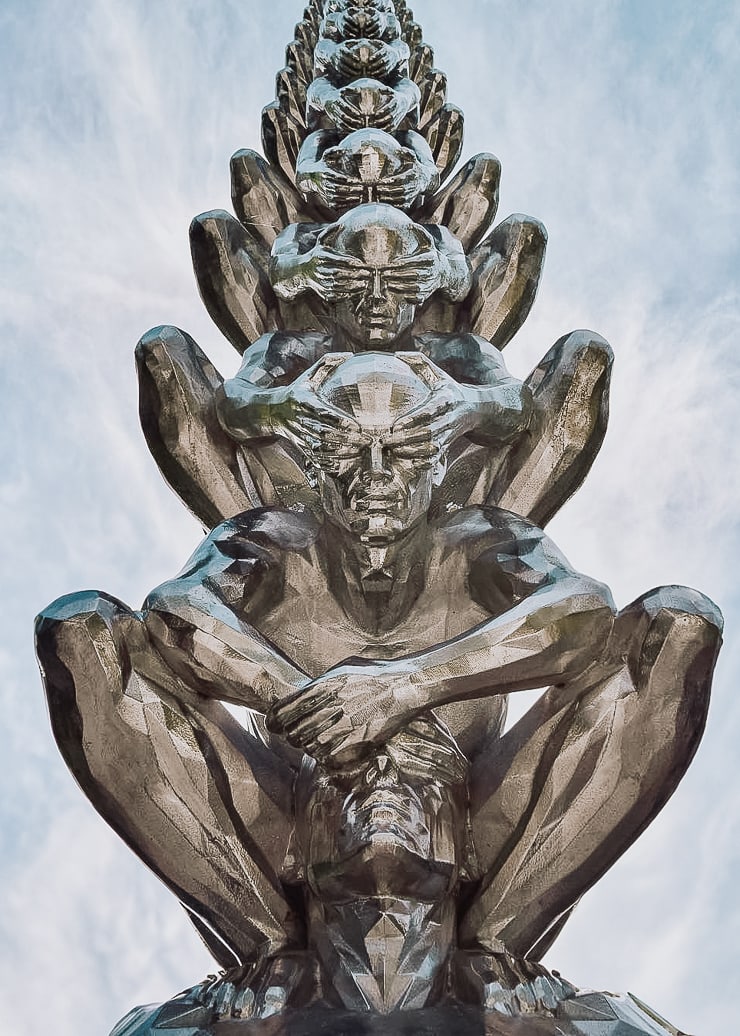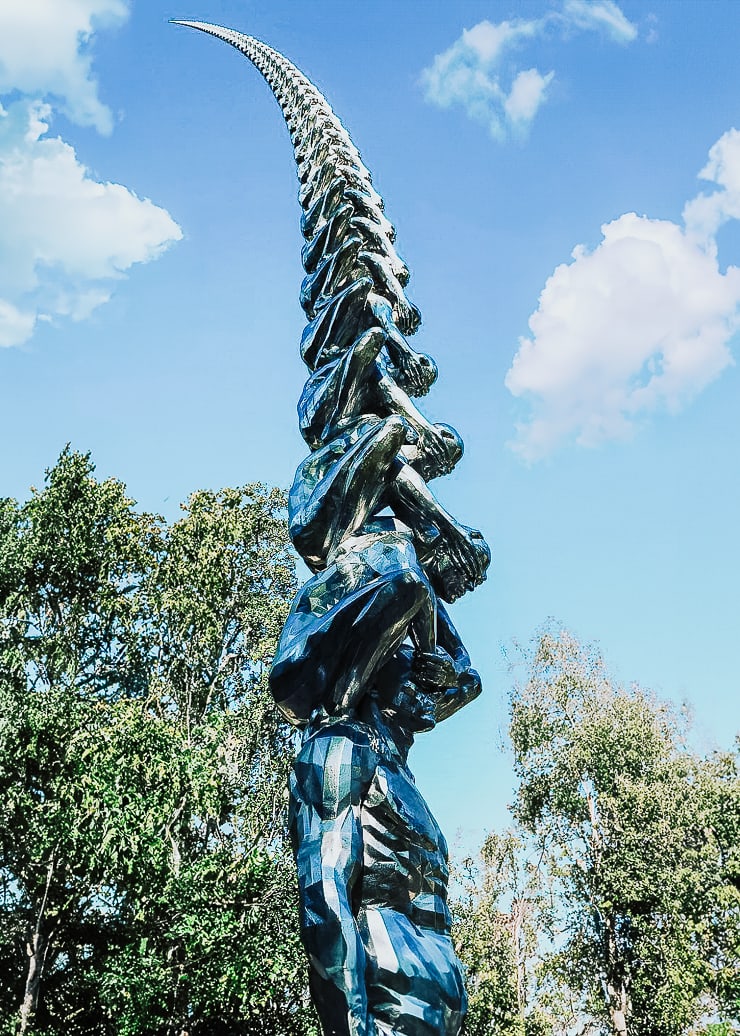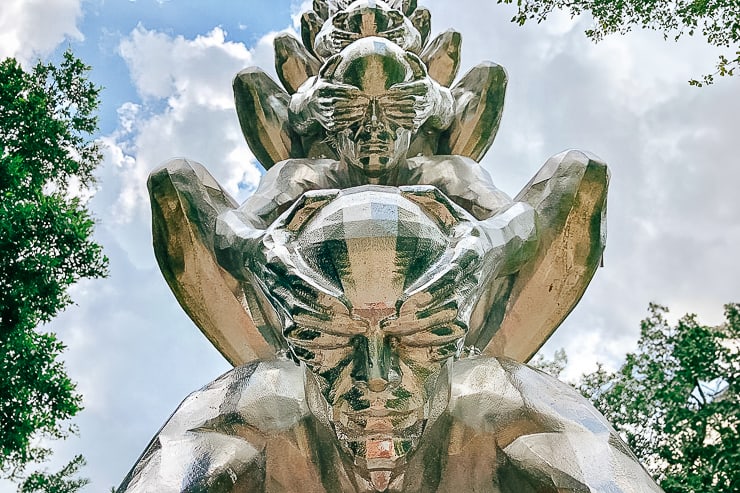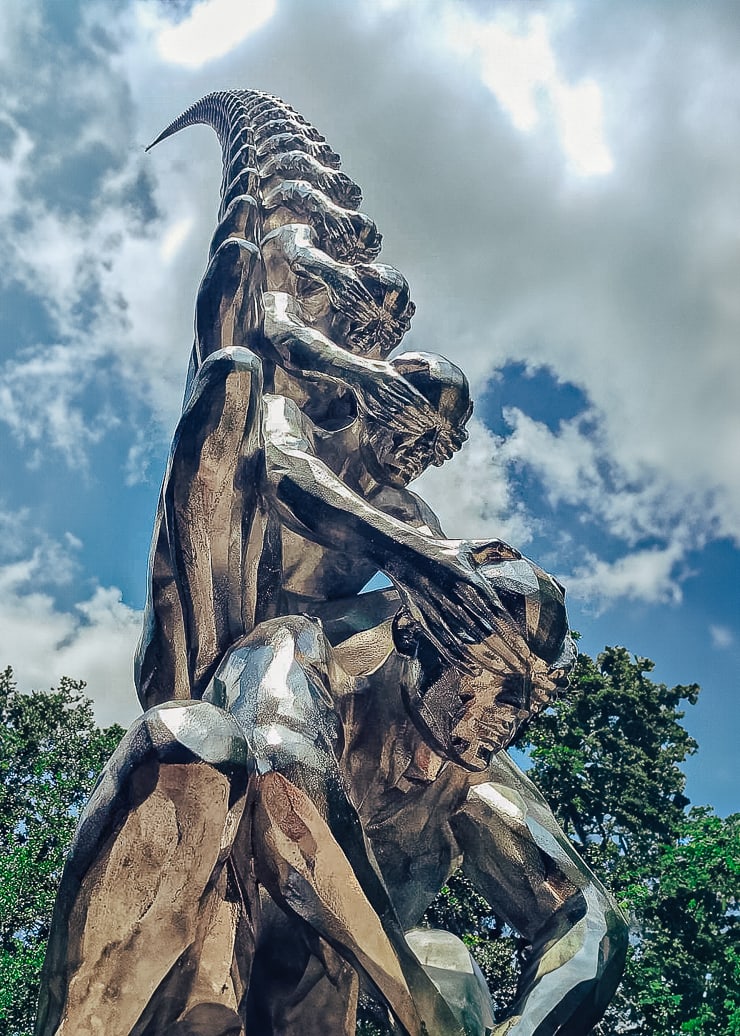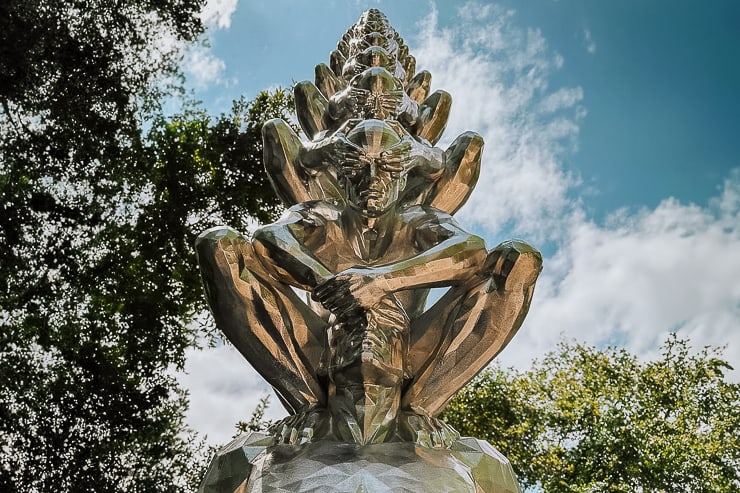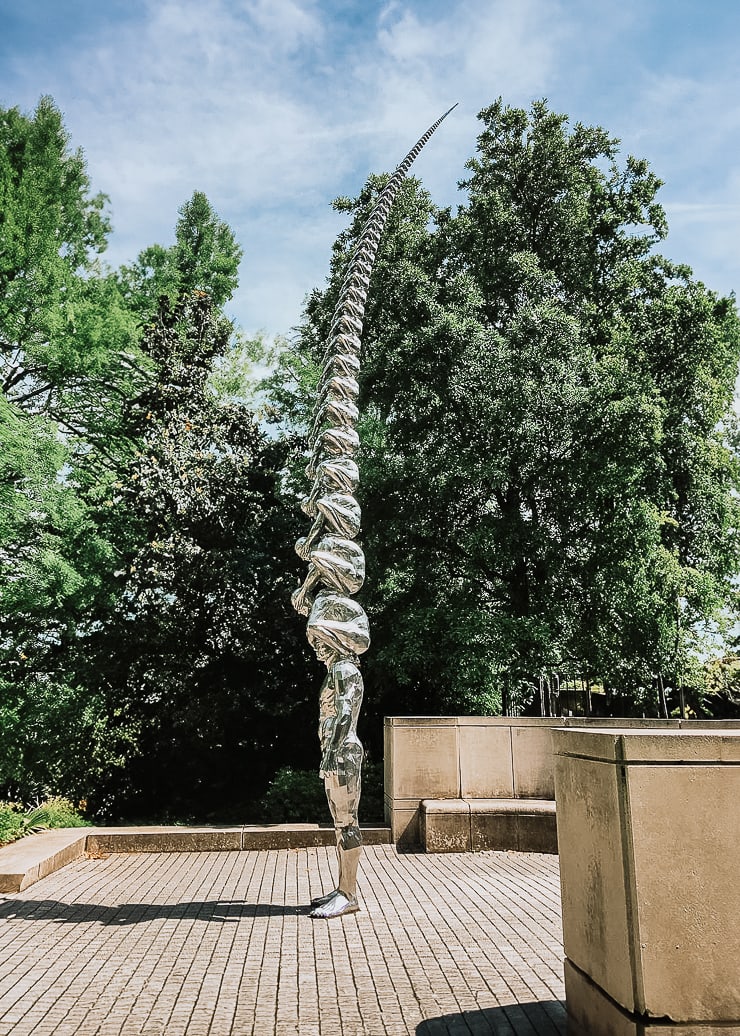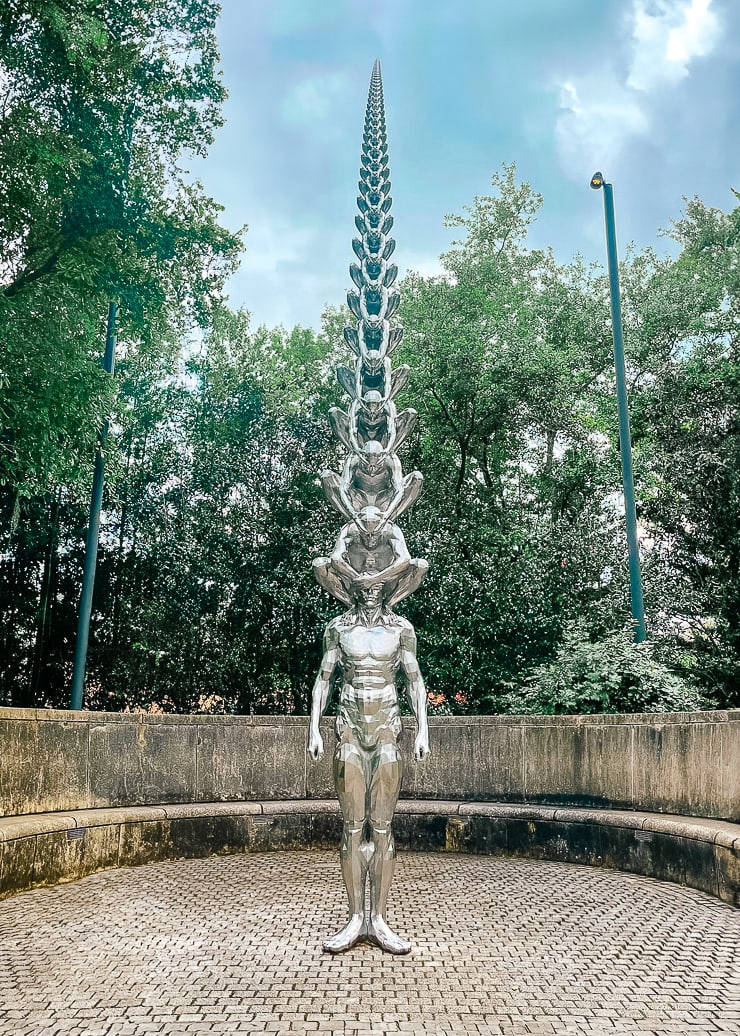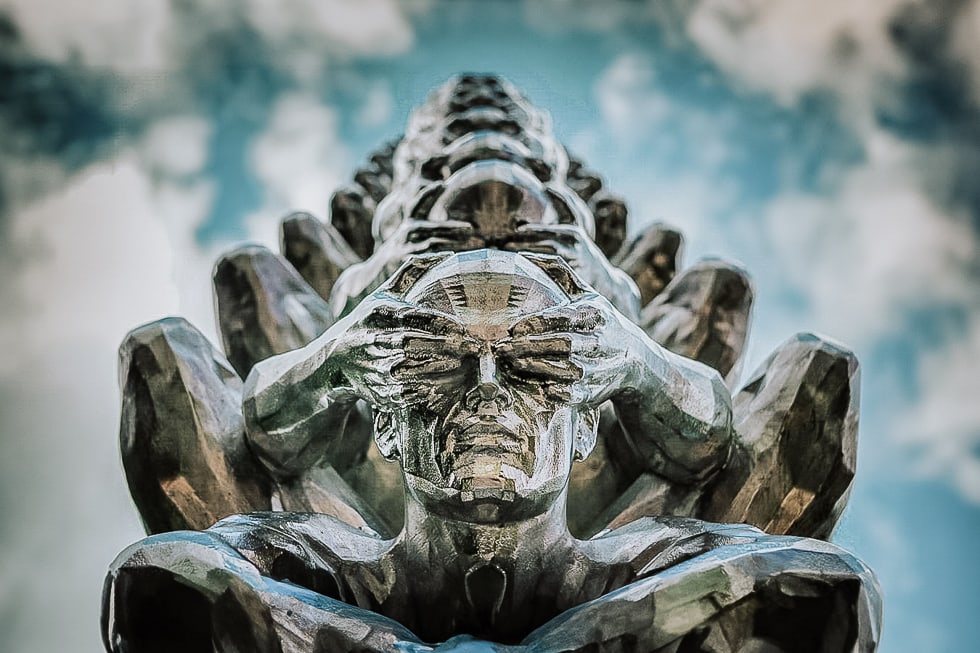The Karma sculpture, a distinctive work of art at the New Orleans Museum of Art (NOMA), was created by Korean artist Do Ho Suh. Known for its unique concept and design, the sculpture has held its position in the Sydney and Walda Besthoff Sculpture Garden since 2011. As a captivating feature of the museum, it continues to intrigue and inspire visitors each day.
The sculpture is composed of 98 humanoid figures, meticulously arranged in a towering column that reaches towards the sky. Each figure covers the eyes of the one beneath it, forming a seemingly endless ladder that ascends upward. Though the sculpture stands only 7 meters (approximately 23 feet) tall, it creates the illusion of stretching infinitely. As the figures climb, they gradually diminish in size, and the tower subtly tilts, enhancing the impression that the tower extends far beyond its actual height.
Transitioning from its conceptual design to its physicality, the Karma sculpture is made of brushed stainless steel. This selection not only lends the figures a reflective quality but also transforms the sculpture into a stunning contrast of shimmering silver against the garden’s green backdrop. Despite its otherworldly aspect, a firm anchor to a stone base ensures the sculpture maintains its earthly connection.
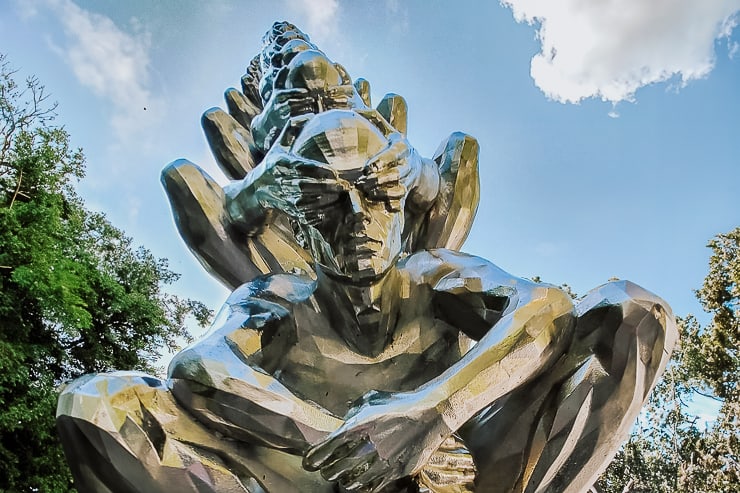
The Meaning Behind the Karma Sculpture
Like many forms of art, the Karma sculpture can be interpreted in a number of ways, allowing each viewer to derive their own unique meaning based on their own perspective and experience.
One possible interpretation of the sculpture is rooted in the traditional Buddhist and Hindu notions of karma. In this context, karma represents the idea that actions in this life affect one’s experiences in the next. The interconnected figures of the sculpture, each following the other in a seemingly endless column, could be seen as a visual metaphor for this cycle of cause and effect.
Another interpretation of the sculpture revolves around the concept of generations. The ascending figures in Karma could be seen as representing humanity as a whole or individual family lines. As the figures grow smaller and more distant toward the top, they evoke the notion that we are all products of our ancestors, even if our memories of them fade with the passage of time. This perspective emphasizes the idea that our lives and past experiences are built upon one another, layer by layer, interconnected through the generations.
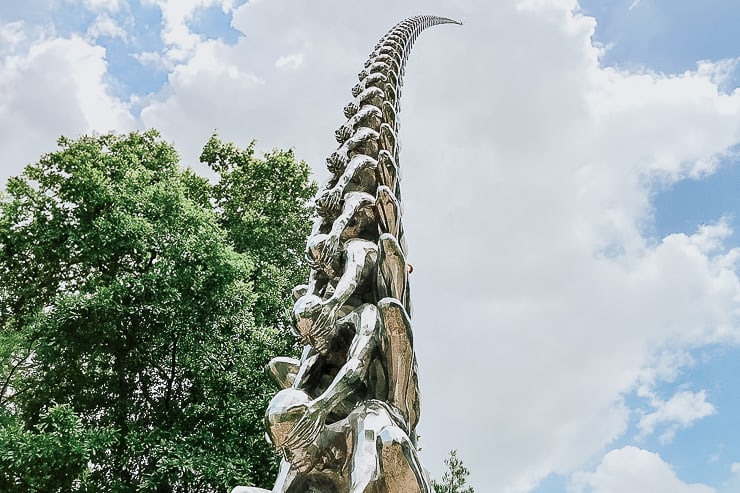
Alternatively, the Karma sculpture can be interpreted as a critique of blind tradition. The figures are depicted covering the eyes of the figure below, suggesting a lack of independent vision or critical thinking. This could symbolize the idea that individuals or societies blindly follow the paths laid out by their predecessors, moving along familiar paths without questioning.
In essence, the Karma sculpture is a thought-provoking artwork that invites contemplation and discussion. Each viewer may see something different in its stainless steel figures and infinite illusion, highlighting the beauty of interpretation in the world of art.
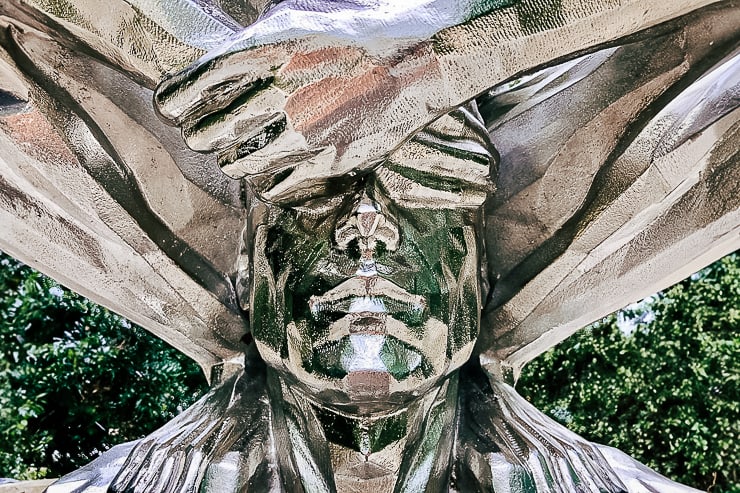
The Artist Behind the Karma Sculpture
The creator of the Karma sculpture, Do Ho Suh, is a South Korean artist known for large-scale sculptures and architectural installations. His thought-provoking artworks often explore themes of identity, memory, and space. Born in Seoul, South Korea, in 1962, Suh’s artistic journey has taken him across continents, exposing him to diverse cultural perspectives that have significantly influenced his art.
Throughout his career, Suh’s work has been featured in numerous prestigious exhibitions around the world, earning him worldwide recognition. Today, Suh’s works are included in the collections of the Museum of Modern Art in New York, the Whitney Museum in New York, and the Tate Modern in London, among others.
The relationship between individual identities and the larger collective, and the coexistence of these two states, is a recurring theme in some of Suh’s work. This idea is embodied not only in Karma, but also in pieces such as “Cause & Effect”. Consisting of over 1,200 cast resin figures arranged in a color gradient to form a tornado-like structure, Cause & Effect visually echoes the themes of interconnectedness and the cyclical nature of actions and their consequences found in Karma.
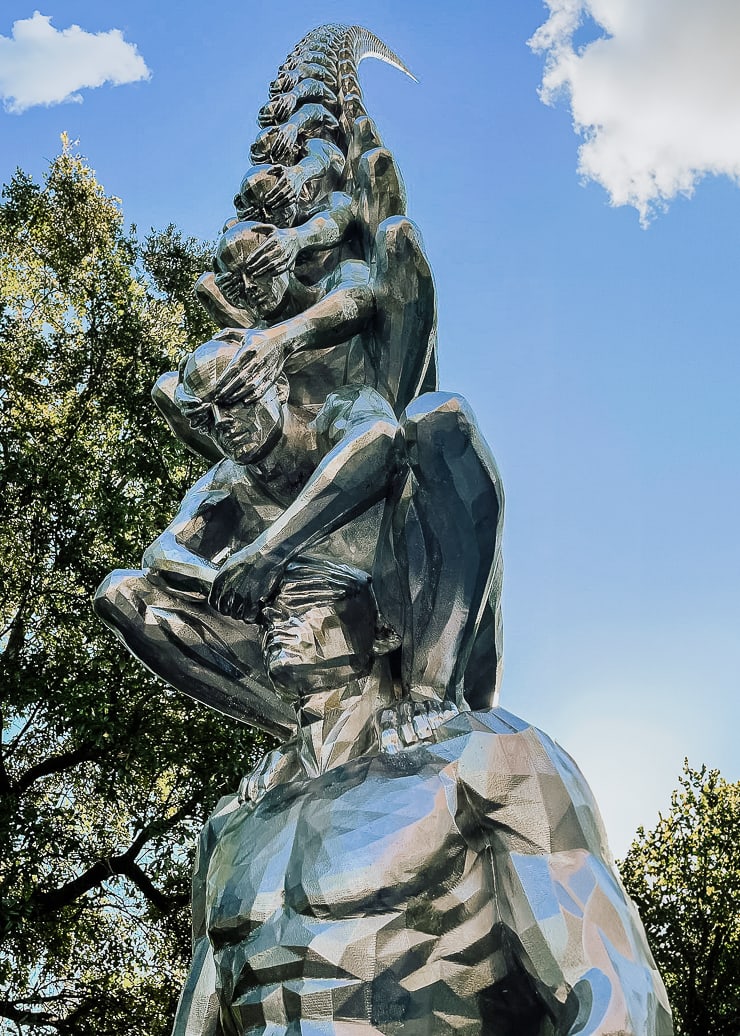
Visiting the Karma Sculpture
Karma is situated in the Sydney and Walda Besthoff Sculpture Garden at the New Orleans Museum of Art (NOMA). This garden spans approximately eleven acres of city parkland bordering to the museum, providing a unique atmosphere as a mature landscape of pines, magnolias, and oaks surrounds the artworks. Today, over 90 sculptures grace the park, each thoughtfully positioned to create a distinctive interaction between the art, the viewer, and the surrounding natural beauty.
Entry to the Sydney and Walda Besthoff Sculpture Garden is free of charge. It is open seven days a week, operating from 10 am to 6 pm during the summer and from 10 am to 5 pm in winter. To help you navigate the park, you can download a map of the garden online.
